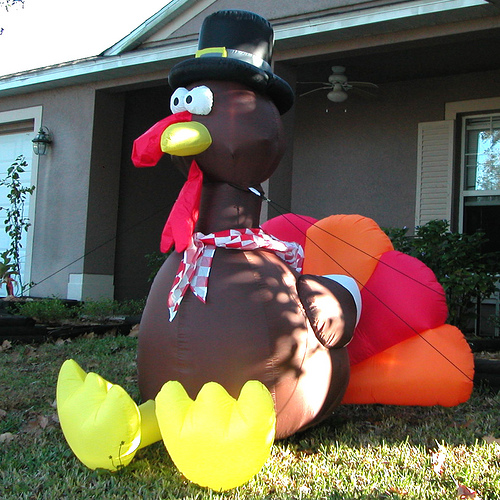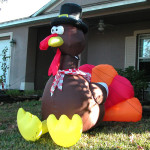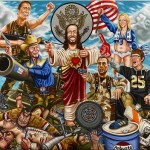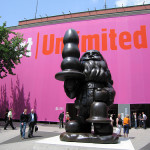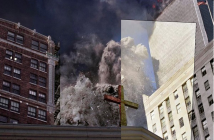Of all the things I find most difficult as an artist, it is the problem of turning one's own personal experience and ideas into something that others can understand that seems to be the most universal. Many artists make work from their own lives, sometimes directly by photographing, filming or painting the world around them, and other times indirectly through metaphor, iconography and abstraction. Sometimes we think our work speaks, but others don't get what we're saying, or they put the pieces together in ways we weren't expecting.
I was thinking about this as I drove up to Vermont this weekend to celebrate Thanksgiving. Stuck in my own head, winding my way along Rt-30 through the mountains, I kept going over recent projects and wondering if they were really saying what I wanted them to say. I thought about my students and the struggles they go through in their work, looking for the visual language that connects their experiences and ideas with an audience.
Is there a universal visual language? Is there any human experience that is common to everyone, that we can communicate in art? I doubt it, and I tend to think that most human experiences short of birth, death and love are more culturally constructed. As an art professor, when I talk about the ways artists find the language of connection, often it is necessary to explain the context of the artist and their work first. Art comes from an artist and their inspiration, but the ideas informing the work often come from a broader cultural zeitgeist. Like music, cinema, literature and other cultural endeavors, visual art grows over time and out of the interests of a certain moment. There is a reason Cubism is not the dominant type of art today -- the language of art has moved beyond that discussion.
While I was thinking about this, I drove around a corner and saw an inflatable turkey wearing a Puritan hat, and laughed out loud. It was the perfect answer to the problem of visual language, and shared cultural experience. The turkey, the icon of Thanksgiving dinner, sat on the lawn with cartoon-ish legs extended. The hat sat on the bobbing head, the whole scene hardly Puritanical.
This, I realized, was the kind of visual experience that artists have been trying to create for a long time. Marcel Duchamp, Salvador Dali, Barbara Krueger, Jasper Johns... the list of artists who create new meaning from jarring juxtapositions is endless. If Paul McCarthy had made this inflatable turkey, I would have thought it a subtle commentary on the ridiculousness of American culture. If would fit comfortably into any number of Tom Sanford paintings.
It's not as if the visual language here is very complex. Yet, intentionally or not, the creators of this decoration have made a vicious and snarky commentary on the ways in which Americans meld and blur their own history, making new histories that are neither fact nor fiction, and ultimately ridiculous. The turkey with the Puritan hat is not art, but it is close. If art is like visual poetry then this turkey is a bit like visual Tourrette's Syndrome, but it is similar in many respects to the ways in which some contemporary artists approach the use of iconography and visual metaphor.
Thinking about this problem of turning one's own personal experience and ideas into something that others can understand, I don't know how much light the inflatable turkey sheds on the situation, but I know that the moment I saw it I knew something I didn't know before. Does it fail as a Thanksgiving decoration because it seems to undermine and mock the history of the holiday, or is it an amazing work of art for that same reason? Does it come down to intentionality? WalMart offered this as a serious product for sale; Paul McCarthy would sell the irony of the juxtaposition. Does either intention change the fact that the visual elements involved -- cartoon-ish turkey and Puritan hat -- combine to make a statement about American culture?
In the end, I suppose it doesn't matter. But, as an artist, I strive to put together the kinds of visual metaphors that inspire understanding and inspiration among my audience. I want them to laugh, to think, and to feel something new that they had not expected. The inflatable turkey did that for me, and whether or not the manufacturers of the turkey wanted me to feel something close to art, or a parody of art, that's what happened. I guess that's a happy thanksgiving.
- An inflatable turkey
- Tom Sanford, Jesus Walks, oil, acrylic, fake silver and fake gold on wood, 2007
- Paul McCarthy, Santa Claus with a Buttplug
Inflatable turkey image via Flickr.
Sanford image found here.
McCarthy image via Flickr.

